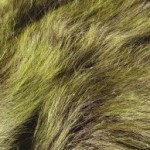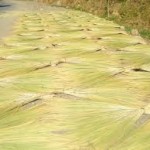One hectare of land could accommodate 5,000 tiger grass seedlings, using a 1 meter by 2 meters spacing.
The area will yield raw materials good for 1,655 ‘tambo’ or soft brooms in its first year according to Norma Palma of The Department of Environment and Natural Resources Ecosystem Research and Development Service (DENR-ERDS) of Northern Mindanao, Philippines.
Production peaks on the third year, with raw for 5,307 brooms. This means a gross income of Php 371,490 pesos (US$ 8,640 dollars) per hectare at Php 70 pesos(US$ 1.63 dollars) per broom at its current market price for good quality tambo broom.
In its sixth year the area could yield about 4,193 brooms or a gross return of Php 293,510 pesos (US$ 6,826 dollars) per hectare.
Net returns in one hectare plantation ranges from Php 31,407 pesos (US$ 730 dollars in the first year to Php 173,116 pesos (US$ 4,026 dollars) in the sixth year.
Its net current value is Php 418,577 pesos (US$ 9,735 dollars) a benefit cost ratio of 1.94 according to Palma in a report cited by the Philippine Council for Agriculture, Forestry and Natural Resources Research and Development (PCARRD).
Tiger grass flowers annually, from November to April. In recent years, the supply of tiger grass has been dwindling. This is because wild tiger grass is the only source for making brooms and handicraft.
Wild tiger grass is collected from mountain slopes, shallow swamps, and along muddy streams and ravines. The grass is also easily cultivated, at a profit.
According to DENR-ERDS, tiger grass is best planted at the onset of the rainy season, in May to June. Replanting should be done two to three months after planting to replace dead tiger grass.
The site is prepared by completely removing existing vegetation. In steep, rolling or sloping areas, zero tillage or no cultivation is encouraged to minimize surface erosion.
In poor soil conditions, 50 grams of organic fertilizer should be applied a the bottom of the hole before planting. Fertilizer may be used at least a month after planting. Weeding is recommended to minimize competition with other grasses.
To prevent fires during the dry season, dry shoots to be removed while banana and fire resistant trees such as Gmelina and Eucalyptus should be planted around the plantation.
After harvesting, thinning of dense clumps should be done by removing a portion of the root stocks. This enhances the development of new shoots and lowers the occurrence of shoot rot.
Farmers should identify quality mature tiger grass. Clumps should be uprooted two to three days before planting. The upper parts of the clump should be cut five to ten centimeters above the root collar.
These should be immediately planted or embedded in waterlogged areas for not more than three days. When planting materials are insufficient, clumps should be divided into three or more culm stocks.


